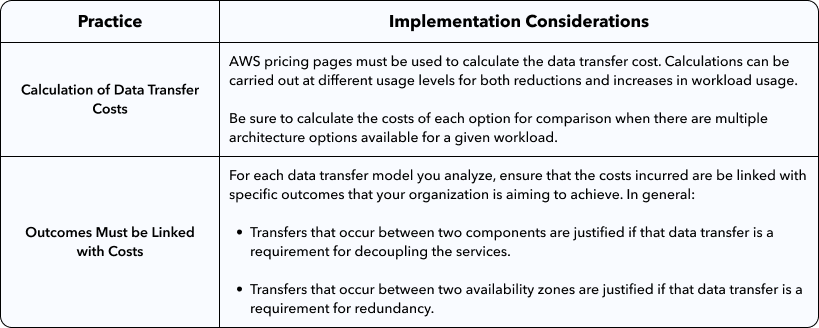This is post 3 of 5 of the Cloud Financial Management in AWS series by guest contributor Vikash Kumar. If this is your first encounter with this series, you may want to check out the first post in the series, “Best Practices for Cloud Financial Management in AWS”, before this one!
For any organization to effectively save money and optimize their AWS cloud costs, they should select the appropriate resources, services, and configurations for their situation. Of course, deciding on the best way to optimize your costs isn’t something you have to handle on your own; there are many solutions available through AWS, as well as AWS Solutions Architects and APN Partners to help you with cost optimization.
This post will walk you through some of the best practices and solution options available to your organization.
Identify Your Organization’s Financial Requirements
Before you can begin optimizing your costs, you must first identify the underlying requirements that are driving the organization’s costs. To accomplish this, the teams in your organization must work together to identify the relevant tradeoffs between constraints like performance and reliability, then determine how best to optimize your infrastructure in a way that satisfies those requirements.
Implementing this Practice
Keep the following considerations in mind when you are identifying your organization’s financial constraints and the tradeoffs required to meet those requirements:

Analyze Workloads and Underlying Components
Starting with the big picture, you should identify your workloads and the components comprising each. For a given workload, analyze each component of that workload, verifying the characteristics of each component regardless of their current costs or sizes. This analysis process is necessary to ensure you have an accurate understanding of your current costs and are able to estimate how changes to your workload will influence those costs.
A thorough analysis of these components should include calculating the total cost of ownership—including management and operational costs—for each service from a given cloud provider.
Implementing this Practice
To avoid the risk of unaccounted costs and effectively understand the financial implications of planned changes to your cloud environment, consider the following when analyzing your workloads.

Analyze the Pricing Model of Workloads
After you’ve developed an understanding of each component comprising your workloads and their associated costs, you can determine which of the available pricing models for a given resource best aligns with the requirements you previously identified. Long-running components, ephemeral components, and highly-variable components may all benefit from selecting the appropriate pricing model.
This analysis should be conducted with the help of the cost management tools provided by AWS, and any changes that result from such an analysis should be aligned with the needs and policies of the organization.
Implementing this Practice
It can be difficult to develop an accurate understanding of the pricing options available for each of your cloud services, but the following considerations can help ensure that you identify the biggest opportunities for cost savings.

Data Transfer Modeling
Finally, data transfer modeling is an approach that allows you to identify the organizational requirements that affect the networking of your components and the associated data transfer costs.
Implementing this Practice
To effectively model your organization’s data transfer requirements, here are some important considerations to keep in mind:

Conclusion
One of the most effective ways to manage your cloud costs is to make effective use of your available resources. By keeping the considerations outlined above in mind, you can improve how your organization manages cloud resources to be more cost-effective without incurring extra expenses.
Written by Vikash Kumar of TatvaSoft
Vikash has a rich experience in digital content publications and you will find his many by-lines published in many reputed publications.

Comments